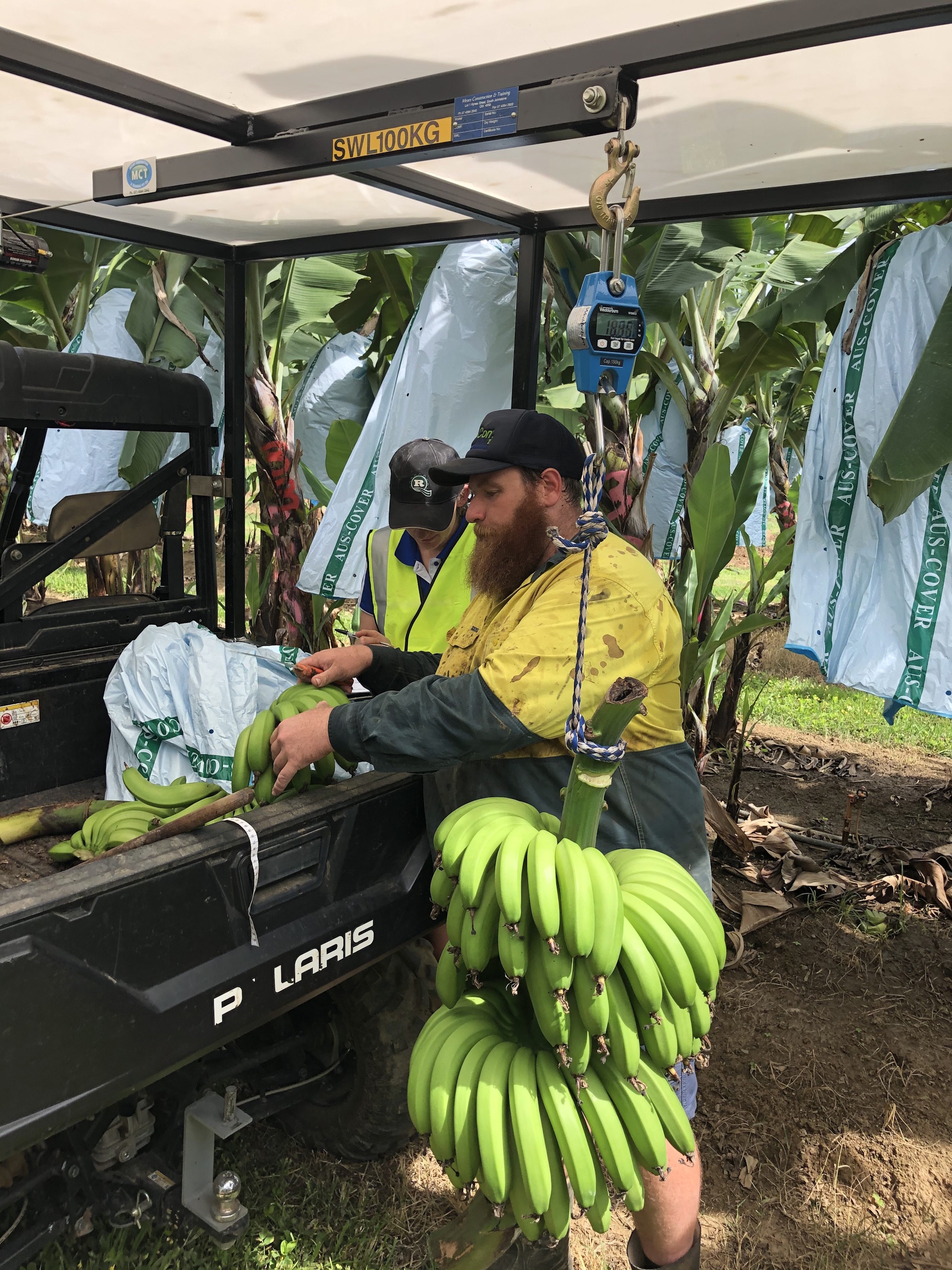A banana nutrient rate trial comparing current nitrogen fertiliser use in commercial banana production systems with new minimum standard (nitrogen fertiliser) application rates reached a major milestone in November.
The trial – which is assessing how these rates effect production, profitability and the environment – had its first harvest of bananas.
The three-year project is run by the Queensland Department of Agriculture and Fisheries in partnership with industry. Trial sites have been established at three commercial sites with different soil types in Bartle-Frere, Tully and Innisfail, as well as at the Centre for Wet Tropics Agriculture at South Johnstone.
DAF Development Horticulturist Curtis Lanham said growers were pleased the trial was taking place on commercial properties, as this ensured the everyday realities faced by growers are factored in.
“We are actually accounting for what happens on a regular farm—not just in a highly controlled research environment,” said Mr Lanham.
“Fertilising bananas is quite complex—some of our farmers apply fertiliser as often as once a week. Whereas other types of broadacre crops may only need one or two fertiliser applications,” he said.
The project team have developed a system called the ‘bolt-on fertigation system’ to deliver controlled amounts of fertiliser within commercial properties in the trial.
“Most of our growers are already using fertigation but developing this new system was a big step forward in running a trial like this and we hope it will benefit the broader horticulture industry who undertake similar trials in the future,’’ he said.
A key component of the trials investigates the impacts of fertiliser use
strategies on reef water quality, which is important for long-term industry sustainability and the health of the Great Barrier Reef.
The Banana Nutrient Rate Trial is funded through the Queensland Government Reef Water Quality Program.

